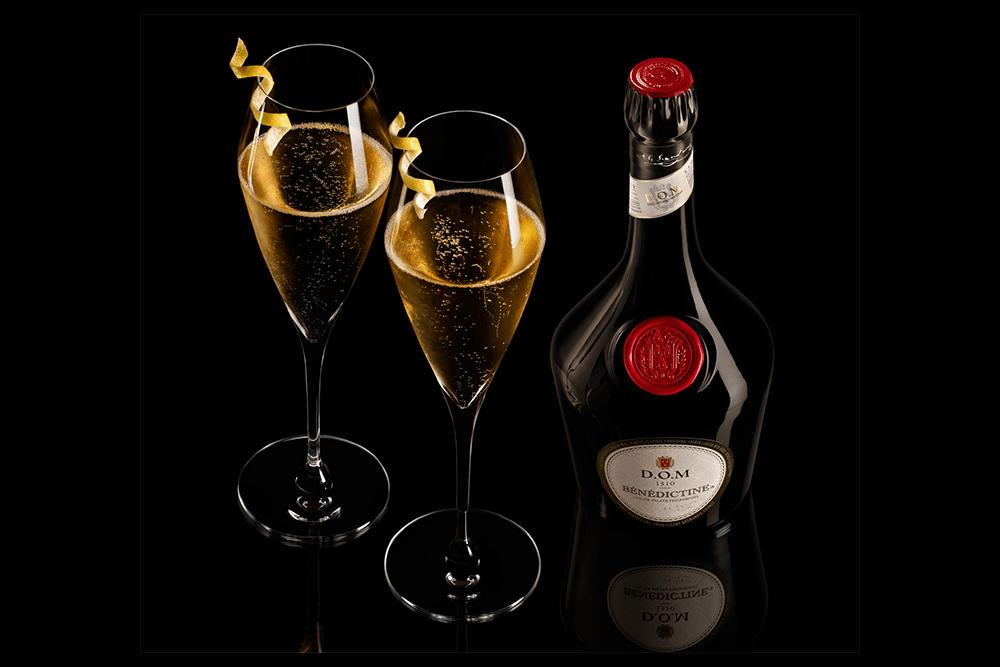Bénédictine is a liqueur made in France with a strong association with a Benedictine abbey in the town of Fécamp. It is often mentioned alongside Chartreuse as a monastic liqueur. The two products are quite different in many ways, but they may share some of the same history.
During the Middle Ages, about 90% of the population of Europe was the non-landowning laboring class, with the remainder split between the nobility and church. Many members of the church lived in monasteries which could be located in urban areas or more isolated, with different amounts of interaction with the surrounding people depending on the type of order—Carthusian, Benedictine, Cluniac, and the like.
The monks were the keepers of most scientific and medical knowledge, as they were literate and often spent time copying important texts from one monastery to the next. Some monasteries operated hospitals and probably all had medicinal herb gardens and apothecaries on site to make medicines for themselves and the surrounding community. Many also sold goods to the local people, including medicines but also dairy products and beer. This practice survives in the Trappist breweries like Chimay and La Trappe.
Herbal medicines were and are often infused into alcohol to extract the active properties of plants, preserve them, and to make them drinkable. Monks spread the knowledge of distillation from monastery to monastery during the Middle Ages as well. Many medicines of the time were a combination of beneficial herbs, spices, roots, and barks, which might act as cures for specific ailments or (for ones with a great deal of ingredients) universal cure-alls. Like Trappist beers, the monks often sold these medicines.

Today many monasteries still sell the modern manifestation of these medicines as herbal liqueurs. None are as well-known as Chartreuse, which is still produced by monks. Funds from its sales support the order. Bénédictine, on the other hand, is not made by monks and has not been for the entire time that it has been commercialized.
According to the brand, Benedictine monk Dom Bernardo Vincelli created a medicinal elixir at the monastery at Fécamp in 1510. It was used by the monks there until they were expelled during the French Revolution at the end of the 1700s. (The monks that make Chartreuse were also expelled from their monastery, twice, but were able to return both times.) One of the Benedictine monks had a copy of the recipe for the elixir in a book he gave to a friend for safekeeping during the Revolution. That friend’s grandchild was Alexandre Le Grand.
In 1863 Le Grand adapted the recipe to make it more pleasant to drink, according to a representative for Bacardi that now owns Bénédictine, but he kept the same number of ingredients (27). How close is it to the original, medicinal elixir? You and I will probably never know.
Le Grand also built the grand palace, Palais Bénédictine, in which to make the liqueur and house his art collection. (The website describes it: “The Palace, half-Gothic, half-Renaissance, is a subtle harmony of extravagance and sobriety.”) Today it is a tourist destination where guests can learn about the brand and take cocktail classes.

As Bénédictine has been around for nearly 160 years now, it has naturally made its way into cocktails both classic and modern. The classics include the Bobby Burns, Singapore Sling, and Vieux Carré.
The liqueur tastes primarily of honey and baking spices, with citrus peel, herb, and stone fruit notes. It pairs well with aged spirits (and so well with cognac that the brand launched B&B for “Bénédictine and Brandy” many years ago), and with richer fruit juices like pineapple and grapefruit. Due to the commonality of some ingredients, consider it where you might use allspice dram or Angostura bitters. It also makes a nice Hot Toddy with a splash of aged spirit and a little lemon. Heavenly.



